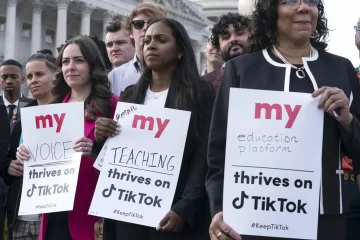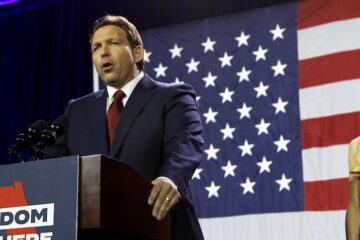As evinced by President Trump’s victory in 2016, the Electoral College doubtlessly favours rural constituencies, producing the potential for markedly disproportional translations of the popular vote to electoral votes. Hillary Clinton won the popular vote by nearly 2 million votes yet lost the electoral college 306 to 232. Had the Democrat Party swung 38,872 votes across Pennsylvania, Wisconsin, and Michigan, Hillary would have won the election.
Electoral data indicates that a great deal of Trump voters in these three states live in declining rural areas with decimated industrial centres and low concentrations of college degree holders. The dichotomy between electoral outcomes in Philadelphia — the largest city in Pennsylvania with a thriving high value added service sector — and the rest of the state epitomises this trend. In Philadelphia, 83 percent of votes cast were for Hillary Clinton but Donald Trump won nearly every rural district and thus surprisingly won a traditionally blue state.
The contrasts in Pennsylvania were reflected nationwide. The “left-behind” lower-middle class, roughly comprised of men over the age of fifty which once lived comfortably on wages from working in sprawling factories, have not seen a real rise in income in thirty years. On the other hand, their educated, younger urban counterparts, firmly embedded in thriving economic ecosystems, have experienced steady increases in income and real wealth.
The Interaction of Economic Agglomeration and The Electoral College
The urban-rural electoral divide is thus largely a result of economic agglomeration. The transition from an industrial economy to a knowledge economy from 1980 to the present has led to a pronounced cleavage in income, education, and age between large cities and predominantly rural areas. The deindustrialization of formerly prosperous manufacturing towns, located principally in the Rust Belt, undermined for many the principle component of the American Social Contract: that children will be better off than their parents. In contrast, embedded urbanites with high levels of education benefited from deindustrialization and the rewards of working in innovative sectors located in cities.
Why are innovative, profitable firms in cities in the first place? Intuitively, one would suspect that the internet and globalization would afford JPMorgan, Google, and Apple the ability to cut costs and employ workers in areas where labour and real estate are cheap. But this is not so. As the Economic Geographer Enrico Moretti has demonstrated, firms cluster in cities despite much higher operating costs for three reasons: easy access to complementary business services, thick labour markets, and knowledge spillovers from everyday interaction. Just as banks require legal services and technology firms utilise consultancies to operate, so do law firms depend on banks, and consultancies on tech firms. A dense network of reciprocal, mutually beneficial relationships incentivizes an agglomeration of service based firms.
The most attractive jobs exist in cities due to the natural forces which induce economic agglomeration: the young and educated flock to them. But what of the older, less educated cohort who overwhelmingly supported Donald Trump?
The failure of the Federal Government to properly remedy the externalities affecting the “losers” of this transition, through vocational training and upskilling, led to the immediate popularity of Donald Trump’s platform and his immense success in declining manufacturing centres.
In 2016, the most robust determinants of vote choice were age and education levels. Hillary Clinton overwhelmingly attracted young and educated voters; Donald Trump appealed to the older and less educated. The average age in the American city is 35 and 29 percent of urbanites hold a bachelor degree. In rural areas the average age is 42 and only 19 percent hold a bachelor.
This cleavage will become more pronounced. College graduates are highly likely to start their careers in large cities and to remain there. As David Soskice and Torben Iverson show in Democracy and Prosperity, the utility of social networks developed in the early stages of a career induce working professionals to locate in cities despite high costs of living. As more young Americans pursue higher education, urban agglomeration will continue and the economic benefits of locating in cities will intensify. Access to valuable social networks and complementarities between skilled workers will thus increasingly concentrate in large urban areas. Post-industrial manufacturing towns such as Akron and Detroit which are already in decline are likely to hollow out further.

Why Hillary Clinton Succeeded in Cities but not Rural Areas.
This gradual influx of the young and highly educated to cities has led to a concentration of political and social attitudes which are best reflected by the Democrat Party. Urban life requires a constellation of tolerant attitudes and incubates positive outlook towards public policy. Tolerance of diversity in ways of life, culture, religion, and sexual orientation is essential due to the fluidity of interactions in the city and workplace. Urbanites understand the importance of spending on highly efficient public transport and the imperative of a clean, functional environment, among other desirable ends achieved by government action. These attitudes are embodied increasingly by the platform of the Democrat Party and were reflected in the outlook of Hillary Clinton. In contrast, rural voters were much more likely to sway to the siren song of Donald Trump, who promoted the return of a manufacturing primacy long since eroded and instead advocated for homogeneity in ways of life.
Implications
The locus of the American economy will continue to increasingly tend away from agriculture and manufacturing towards the provision of services and technology. This implies further concentration of voters in states which are already decidedly blue. The rural, agriculture and resource based economies in states like Wyoming, Montana, North Dakota, Oklahoma and Kansas are likely to remain Red even as their population slowly declines: consequently, the Republican Party will continue to enjoy success disproportionate to the popular vote they win. The Republican Party has shifted further to the right on social and fiscal issues over the past twenty years; if this policy movement continues, an ever dwindling minority will exert disproportionate influence in Presidential policy.
California, the state from which the quintessential Republican, Ronald Reagan, launched his political career, is now consistently blue largely due to the tremendous growth of the technology industry in urban areas. In 2016, over seven-million votes —about 62 percent of the total — were cast for Hillary Clinton, granting her 55 electoral votes. A simple majority would have yielded the same outcome. Thus, 12 percent of the total votes cast for Clinton in California were “wasted”. If America’s presidential election were not determined through the electoral college, these 1,701,000 votes cast in California alone would actually contribute to the final outcome.
The translation of votes to electoral votes in California offers a glimpse into the future. The natural economic force of agglomeration already creates a stark urban-rural political divide within states themselves, a cleavage which does not necessarily disrupt national political integrity; but the Electoral College also exacerbates this divide between states, producing a contentious, pernicious politics between America’s growing, prosperous cities and declining rural areas.
The Electoral College favours rural interests. As the city becomes the fundamental unit of American economic life, there will be further deprivation in rural areas. The clear divergence of values, education, income, and age which together constitute the urban-rural cleavage has already produced a fundamentally disproportionate outcome in the 2016 Presidential Election. 38,082 votes dictated the course not only of American domestic politics, but had significant international impact through Trump’s foreign policy choices. The latent populism which manifested itself in Donald Trump’s victory reveals that the Electoral College may not be congenial to the demographics of the modern United States, which have shifted due to the forces of economic agglomeration.


